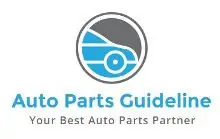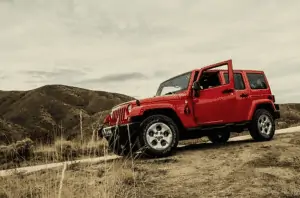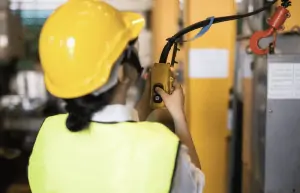Using a snatch block is a better choice for smarter people who know how to use them and get their job done.
This mechanical tool is very much handy and efficient when we talk about utilizing it for recovering a stuck car or jeep.
Now, if you ask me “how to use a snatch block,” I’d say it’s not rocket science at all. Here, I’ve tried my best to cover up all the nooks and crannies about snatch blocks so that you can make the best use of them.
Without this heavy-duty pulley, it’ll be nothing but a pipe dream to think about lifting heavy objects with minimal force; mark my words!
So, without further ado, let’s get familiar with the basic techniques of using it.
Step-By-Step Guide of Using a Snatch Block

Now, you’re just a single step away from finding out how to use the snatch blocks in a proper way.
I’ve divided the process into some steps that might help you out, and you can easily recover a stuck vehicle by following the steps.
Step 1: Parking the Vehicle
First off, be sure to park your car or whatever it is on a flat or sturdy surface if possible. It gives you plenty of advantages before you start the recovery.
Following that, release the clutch on the winch. And then, pull out the winch cable straight away.
Step 2: Fastening the Snatch Block
Keep on pulling until it reaches the broken or stuck vehicle. Afterward, unlock your snatch block from the sides of the plate and connect the thread of the winch carefully.
Now your duty is to lock the snatch block and check if it’s fully attached or not.
Step 3: Connecting the Shackles
Next, connect a well-built shackle around the snatch block. After securing it, hook the shackle on a reliable and powerful anchor point of the stuck vehicle.
Guess what? This allows you to pull the winch cable through the snatch block while the hook is on the vehicle’s anchor point.
Also, you can use straps instead of shackles if you really want. Wrap the straps around the tree and attach the two ends of it with a D-shackle.
After that, follow the same process and hook the straps on the anchor point of your vehicle.
Step 4: Launching the Clutch
Finally, the fastening and hooking are done. Now, you can launch the clutch and pull out the vehicle. The snatch block will do the hard work for you to recover the stuck vehicle without much effort.
For safety reasons, you might place dampeners on the recovery line of the winch cable. That will help you to prevent accidents and injuries if the recovery straps fail while recoiling the winch.
Different Situations of Using Snatch Blocks
Actually, many people don’t know about the versatile use of a snatch block. So, I’ve decided to talk about some of the situations where you can find the snatch block useful.
Let’s see!
For Recovery
Yes, you’ve guessed it right. A snatch block is a popular choice for a recovery situation. As you know, most winches can’t generate the full mechanical power that’s required in a recovery situation.
In that case, snatch blocks play a significant role in reducing the pulling force and generating a greater output to recover the stuck vehicle.
For Zip Lining
Snatch blocks are also adventurous and fun if you go on a trip in the mountains or hills to explore the beauty of nature. Zip-lining is done by attaching the snatch blocks to the cable.
In a nutshell, this efficient mechanical tool cuts down your weight by half and puts equal tension on the ropes so that you can easily move and discover new heights.
Other Usage
Well, most people don’t know that Astronauts use snatch blocks as normal types of equipment in space for controlling their movements in the best way possible.
As everything is weightless in space, you need something like the snatch blocks so that you can stop floating around.
So, they hook the snatch block on the desired anchor point and travel around with ease. Also, they do this inside the spaceship on zero gravity for training purposes.
Several Types of Snatch Block
Since the snatch block is used for different purposes, you’ll find a variety of pulleys available in the market.
Considering the matter, I’m going to discuss the most common types of it briefly.
The One with Chain or Shackle
These pulleys with shackles are used for rigging applications (temporarily or permanently).
Included with a Hook
When it comes down to temporary usage, this snatch block has a specific hook that helps to wire the ropes of the winches or hoists.
With a Swing Block or Flexible Side Plate
Most probably, this one right here is the most popular pulley available for vehicle recovery. Indeed, it’s used with 4×4 off-roaders and winches.
Working Principle of Snatch Block
Now, let’s have a quick look at another important aspect of the pulleys, which is their working mechanism.
I’ve tried to cover all the nuts and bolts of the snatch block that you might find helpful. So, read this thoroughly!
- Instead of a single line pulling, snatch blocks provide a double lining pull.
- A single-line winch will only pull against the tree. But that’s not the case with the snatch blocks. After wrapping up the winch cable around the tool, the cable comes back to hook the recovery vehicle.
It lets you double up the power of the winch. In other words, you’re pulling the winch itself instead of pulling any anchor or tree.
- The excess power goes halfway across the line as a penalty, which means the speed will go a bit slower. But trust me, you can sacrifice the speed since it’s very negligible.
Good Aspects of a Snatch Block
If you can crack the code of using the snatch block properly, then there’s plenty of advantages that you get from it. Let’s have a quick look at that.
Double the Power
The ultimate goal of using these pulleys is to increase the pulling capacity of the winch. Consequently, your device can lift more weight, and that too with minimal effort.
Less stress on the Cable
Indeed, the cable deals with less stress when you use a snatch block. Also, it keeps the wire out of breaking down and makes them usable for a long period.
Enhances the Lifetime of the Winch
The cable, as well as the winch, gets a longer life if the snatch block is used. On account of the lower pulling force, the power tool gets an increased lifetime.
Time Saver
Research shows that a piece of snatch block not only saves much more time but it also can save input energy quite wonderfully.
Safety Measures
Since the snatch block is a mechanical tool, it must be used by following certain safety measures. Otherwise, you can’t keep yourself out of injuries.
So, don’t forget to maintain the following things below.
- Every snatch block has its specific limit of taking the loads. In that case, you should never exceed the limit. Otherwise, the block will release the vehicle and break out.
- Use a dampener on the recovery line. When the recovery straps fail while recoiling the winch, it reduces the chance of injuries.
- Try to wear safety gloves if you’re a newbie, and then fasten the ropes on the blocks. It’ll keep your hands and fingers away from cutting down.
- Check if the vehicle, anchor point, or winch is capable of taking the required load or not. This is important as the extra load will have a direct impact on the snatch blocks. So, be sure to measure the capability of your instruments.
- You can use multiple blocks if required. It ensures the maximum output and keeps the stress away from a single pulley.
- To make the pulley more effective and stronger, you can use some extra equipment, such as the tow straps, a hook end-fitting, a winch winder, a chain-and-grab hook, and so forth.
Wrapping Up!
After considering the types and your requirements, it’s always better to get the right snatch block for which you can get your job perfectly done.
Besides, my writing on how to use a snatch block will help you use it effortlessly, and of course, much more safely!
However, my personal suggestion is to put on safety gloves before using snatch blocks or such essential equipment.
Because after all, we all don’t want to play with fire, do you want to?
Definitely not!





